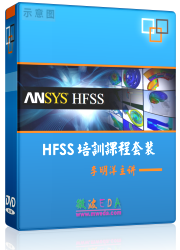- HFSS15在線(xiàn)幫助
- 首頁(yè)
- HFSS教學(xué)
- HFSS 15 在線(xiàn)幫助文檔
Radiated Fields Post Processing
To analyze the radiated fields associated with a design, define a radiation surface over which the fields will be calculated. Such a surface can be a boundary radiation surface, or a custom radiation surface which you define as a face list. The values of the fields over this surface are used to compute the fields in the space surrounding the device. This space is typically split into two regions — the near-field region and the far-field region. The near-field region exists at less than a wave length from an energy source. The far field is where radiation occurs. See Radiated Fields for the specific equations used in HFSS for calculating the near and far field regions.
You can define a spherical surface over which to analyze the near or far fields by specifying a range and step size for phi and theta. This defines the spherical direction in which radiated fields will be evaluated. You can also draw a line along which to calculate the near fields.
You also may need to edit the Global Material Environment in consideration of the far fields calcuclation.
Optionally, after defining the radiation surface, HFSS can compute antenna array radiation patterns and antenna parameters for designs that have analyzed a single array element. HFSS models the array radiation pattern by applying an "array factor" to the single element’s pattern when far fields are calculated. You set up the array factor information by defining either a finite, 2D array geometry of uniformly spaced, equal-amplitude elements (a regular array) or an arbitrary array of identical elements distributed in 3D space with individual complex weights (a custom array.)
HFSS can also compute antenna parameters, such as the maximum intensity, peak directivity, peak gain, and radiation efficiency. For near-field analysis, HFSS can also compute maximum parameters, such as the maximum of the total E-field and the maximum E-field in the x-direction.
Note |
When computing near and far fields, keep in mind that you must have defined at least one radiation or PML boundary in the design. At any time you may change the radiation surfaces that HFSS uses when calculating the radiated fields without needing to re-solve the problem, but the radiation-type boundary is still required. |
Related Topics
Setting Up a Near-Field Sphere
Setting Up a Near-Field Line
Drawing Non-Model Objects
Computing Maximum Near Field Parameters
Setting up a Far-Field Infinite Sphere
Defining Antenna Arrays
Computing Antenna Parameters
Technical Notes: Radiated Fields
-

國(guó)內(nèi)最全面的HFSS培訓(xùn)課程,包含7套視頻教程和2本教材,資深專(zhuān)家講解,視頻操作演示,結(jié)合最新工程案例,讓HFSS學(xué)習(xí)不再難...【詳細(xì)介紹】





